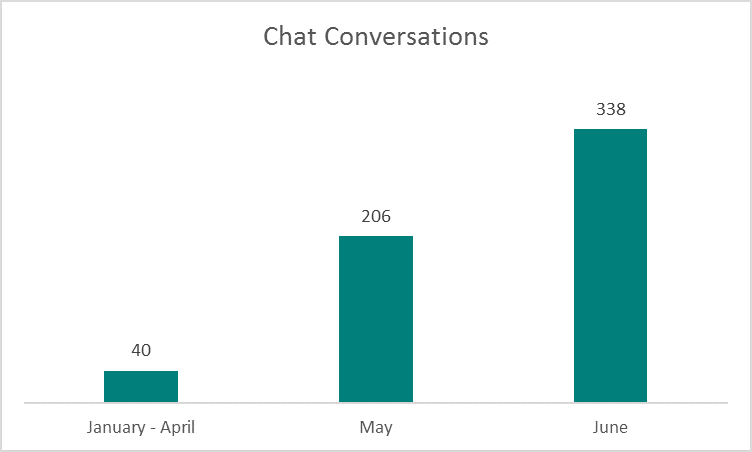What Norma the dog can teach us about effective communication with students

In October 2017, the ACAP library introduced a chat functionality on their library website. The chat function is part of the LibAnswers platform which manages queries to the library.
The introduction of the chat function was part of a strategy to redirect student queries from phone and email in order to deal with them more efficiently. The chat box was initially hidden as a small ‘Ask Me’ tab at the corner of the library page. Students may have assumed it was a ‘bot’ which would simply access a FAQ – this could explain why it didn’t gather much attention in this form. However, the chat box is run by ACAP library staff with real people on the other end!
The game-changing software update: Introducing Norma the dog
In May 2018, a software update meant that the chat box became more visible to users as a pop-up. This is where Norma the dog came into the picture – literally. The chat box required an avatar and Norma the Jackuahua leapt right in to represent the library’s service. Norma belongs to Melbourne-based Librarian (Digital Services and Development) Jamie Sklavos. The team noticed that since introducing Norma, more and more chats started coming in.
Increasing engagement in the chat box
It’s hard to prove that Norma herself has driven increased attention, but the new pop-up feature has definitely made a difference, as shown by recent analytics.
Since the new pop-up chat box was introduced, the library has gone from 40 chats in January-April to 206 chats in May, shooting to 338 in June. July is tracking similarly with 60 chats in the first week. To date, feedback has been provided on 145 chats, with an average rating of 3.83 (4 being excellent).
Lessons from Norma: Technology and the student experience
The recent Navitas Global Student Technology Survey highlighted a particular trend among our students – they reach for the most convenient, just-in-time resources when they want to learn new things or have a problem with technology. This means that Google/online search, friends, classmates and teachers are all popular options with students less likely to wait for help desk responses or read user guides.
However, in the education context, technology has a bigger role to play than just connecting students to information; it has a powerful role in connecting people to people. As research already tells us, the concept of the ‘connected’ and ‘capable’ student is important for their overall success. Being ‘connected’ requires connection with peers and relationships with teachers and staff, and to a robust support structure.
The success of ACAP library’s chat box highlights the potential of simple, quick-fire chat technologies in creating real connections between students and teachers/support services, therefore increasing student satisfaction and engagement. Look no further than some of the feedback from students and you can see the helpfulness and connection ACAP library staff are known for, come through the chat function: “Absolutely love how easy it is to get answers to questions!”; “Very helpful, kind response and fast as well”.
Rather than trying to compete with ever-present messaging apps, which are typically perceived as distracting, institutions can explore and adapt these student-friendly technologies to enhance communication and engagement in their own contexts.
To continue the conversation, contact Ian Drummond, or share your thoughts and ideas via Yammer, Twitter or LinkedIn.

